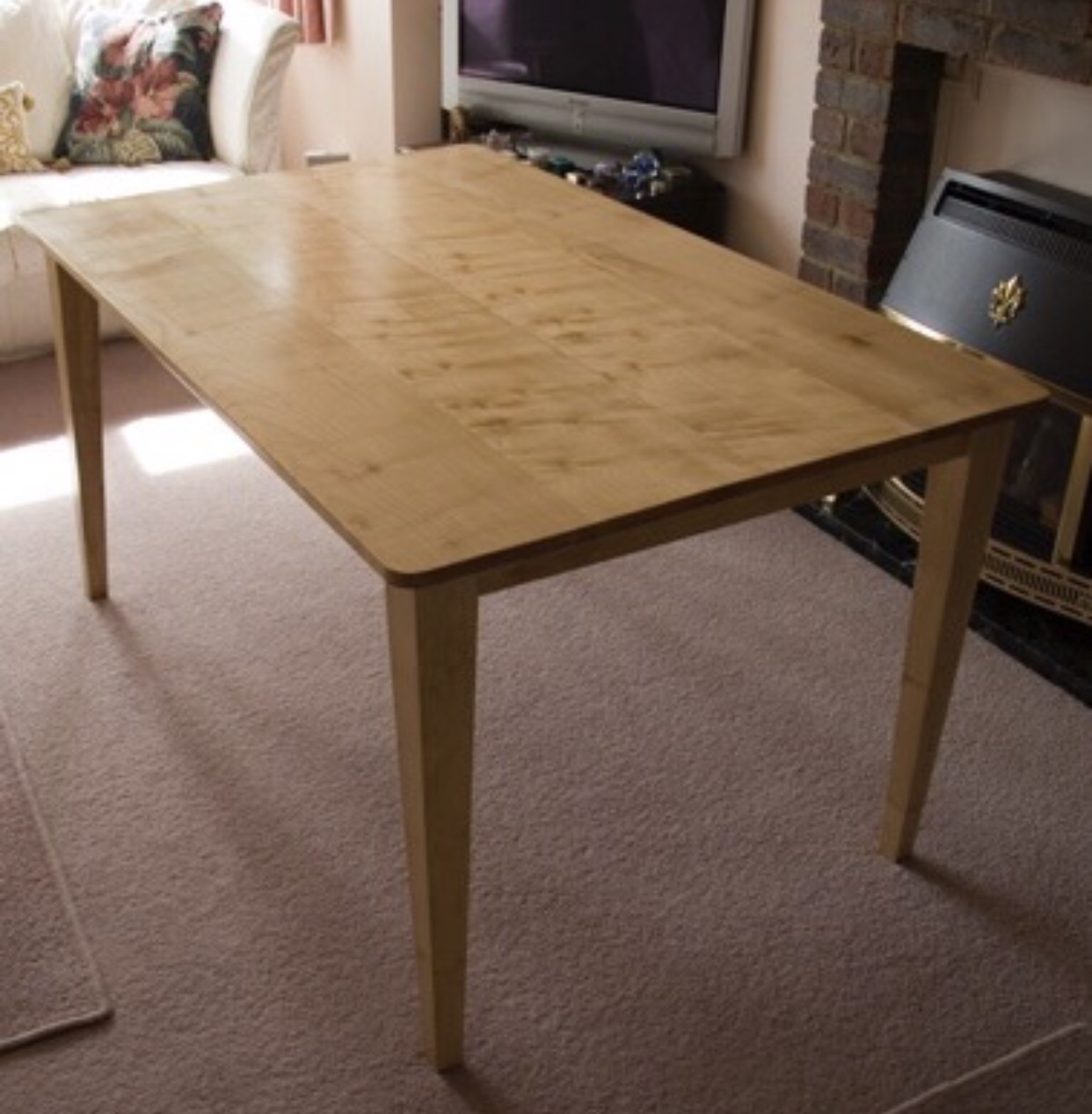I cut a tapered sliding dovetail today for the first time (apart from a couple of practise joints before tackling my project work pieces). I obtained a very good fit and I am very happy with the result but the process of getting there was less satisfactory. Trial fit, remove, fettle, re-fit, repeat, repeat, repeat ...
One thing that was obvious during this process is that I had insufficient taper. The idea of the taper is to make the joint easier to assemble but my joint had a lot of friction quite a way before the joint was fully together. I needed more taper. However from my test joints I decided that a pronounced taper exaggerates the effect of any slight error and it is easy to have the "tenon" piece slide too far through the housing. So my question is how much taper should I use? My joint was 40cm wide and I tapered it from 22mm to 19mm. I have to cut a similar joint on the other end of my shelf so I will try a more pronounced taper there.
An alternative explanation for my problem is that my joint is binding on the bottom of the housing, or on the shoulder. I believe my joint is a good fit there but I am not sure how I can categorically eliminate that as the source of my problem. Any tips?
One thing that was obvious during this process is that I had insufficient taper. The idea of the taper is to make the joint easier to assemble but my joint had a lot of friction quite a way before the joint was fully together. I needed more taper. However from my test joints I decided that a pronounced taper exaggerates the effect of any slight error and it is easy to have the "tenon" piece slide too far through the housing. So my question is how much taper should I use? My joint was 40cm wide and I tapered it from 22mm to 19mm. I have to cut a similar joint on the other end of my shelf so I will try a more pronounced taper there.
An alternative explanation for my problem is that my joint is binding on the bottom of the housing, or on the shoulder. I believe my joint is a good fit there but I am not sure how I can categorically eliminate that as the source of my problem. Any tips?







































